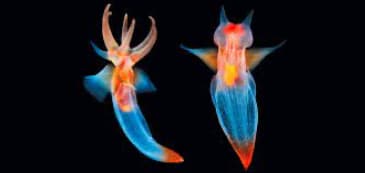Most people have visited an aquarium at least once in their life, whether it be on a school field trip or on a family vacation. We all cherish positive memories of watching in awe as swarms of colorful fish swim by, laughing at cute sea otters playing with their food, and getting wet when enjoying interactive exhibits. However, the joyful atmosphere of kids running chaotically and parents taking flashy pictures is often not reciprocated by the animals living there. As awareness of animal rights and environmental conservation continues to grow, so does the criticism surrounding the ethics of keeping sea creatures locked up behind glass bars.
One of the biggest issues posed by aquariums is the impact of captivity on marine life. The natural habitats of many aquarium species, including dolphins, orca whales, and sea turtles, span thousands of miles in open oceans. For example, orcas can dive up to 1,000 feet and can travel up to 140 miles a day, yet are forced to live in 86 by 51 feet tanks that are 34 feet deep. Critics claim that confining marine creatures to such enclosures can be a detriment to their physical and psychological health. Specifically, the limited space leads to a lack of stimulation. Consequently, the animals are unable to exhibit natural behaviors, an issue prevalent among larger organisms. To gain a bigger and more educated insight into the self-harm, abnormal behavior, and early death of sea creatures, I urge you to watch the 2013 documentary Blackfish. This film, which can be found on Netflix, sparked a global conversation about the ethics of keeping orcas in aquariums after it highlighted the tragic deaths of orcas in facilities like SeaWorld. It has been shown time and time again, that life in captivity can have dire consequences on the health and safety of marine animals.
However, not all aquariums pose a threat to sea life; some actually play vital roles in marine conservation efforts. An example of such is the Monterey Bay Aquarium, renowned for sustainable fishing practices and ocean conservation initiatives. One of its biggest conservation programs is the Sea Otter Program, in which the Aquarium contributes to southern sea otter population recovery through innovative work to rescue, rear and reintroduce stranded pups to the wild and to raise public awareness of sea otters’ vital role in shaping healthy coastal ecosystems. Similarly, the Georgia Aquarium in Atlanta houses breeding programs for endangered species like the beluga whale. While it may seem that aquariums are purely an entertainment business, many are actively engaged in educational outreach and teach visitors about the importance of ocean conservation. All in all, they help raise awareness and inspire future generations to pursue the wonderful field of marine biology.
Nonetheless, the varying treatment and living conditions of animals among institutions makes morality a hot topic of discussion. This is why I ask you to spend a few minutes researching before planning your next trip. After all, animals are not just entertainment or an attraction. When caged, they are prisoners of our society’s demands and needs.
Sources:
- Here’s How Tiny the Orca Tanks at SeaWorld Really Are. (2018, June 8). SeaWorld of Hurt. https://www.seaworldofhurt.com/things-bigger-than-an-orca-tank-seaworld/
- (2021). Montereybayaquarium.org. https://www.montereybayaquarium.org/act-for-the-ocean/california-ecosystems/what-we-do
- Georgia Aquarium. (2024, August 6). Georgia Aquarium. https://www.georgiaaquarium.org/international-union-for-the-conservation-of-nature-iucn/










